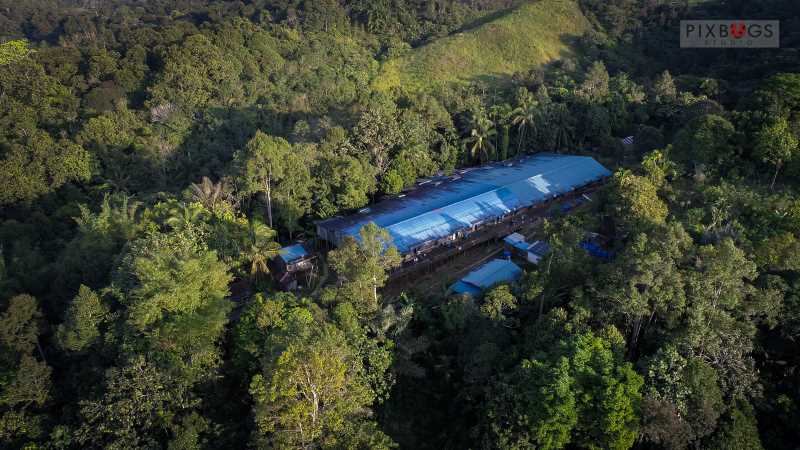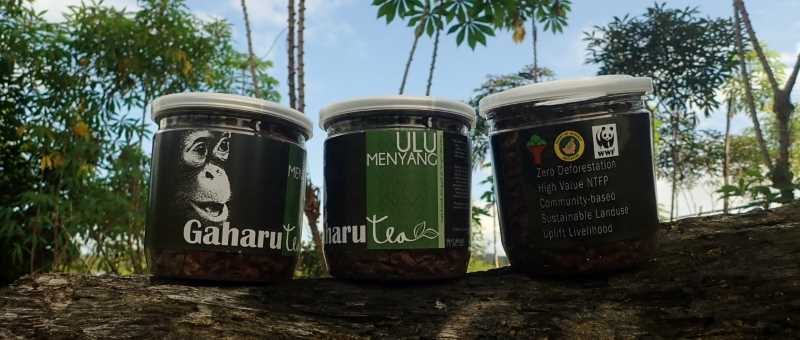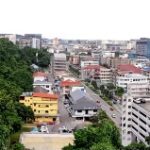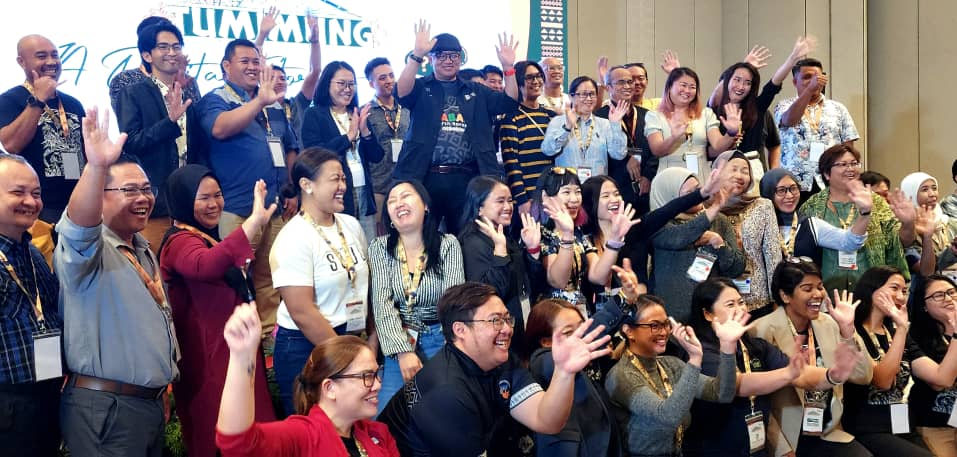In the sphere of biodiversity conservation, the states of Sabah and Sarawak have much to be proud of. It is not only home to a thriving ecosystem and abundant flora and fauna, but also home to the Bornean orang-utan, the largest tree-climbing mammal in the world. Known as one of the three species of orang-utans, the Bornean orang-utan belongs to the only genus of great apes native to Asia.
There are three subspecies of Bornean orang-utans – the Northeast Bornean – Pongo pygmaeus morio – found in east Kalimantan and Sabah, the Northwest Bornean – P. p. pygmaeus – found in northwestern Kalimantan and Sarawak, as well as the Southwest Bornean – P. p. wurmbii – that inhabit southern west and central Kalimantan.
Like many other species in Borneo, the Bornean orang-utan have faced its fair share of threats causing its population to dwindle over the last few decades. In 1973, Borneo was home to an estimated 288,500 orangutans. By 2016, their numbers had dropped by almost two-thirds, to 104,700.
Not all is lost. In Malaysia, Bornean orang-utan numbers have been positive. There are an estimated 13,000 orang-utans in the wild in Sabah and Sarawak collectively. These numbers are considered stable and are believed to remain so provided good forest and conservation management practices are put in place and awareness heightened.

However, stable orang-utan numbers does not mean that we can now sit back and do nothing. On the contrary, it is a sounding call for us to do more to continue to secure the future of the orang-utan population in our forests.
In Sabah, WWF-Malaysia Conservation Director Dr. Henry Chan said, as part of the three pillars (Protect, Produce, Restore) under the Living Landscapes Approach in Sabah, forest restoration is among the key efforts that WWF-Malaysia advocates for as a way forward in conserving orang-utans. The two main threats to orang-utan survival include the loss of habitat due to deforestation as well as the conversion of land to agriculture and infrastructure development. As tree-dwellers, the availability of trees are important for an orang-utan not only as shelter but also for food and travel.
“In order to secure the survival of the orang-utan, there is a need to ensure that the habitat can support orang-utans and degraded habitats are restored,” said Dr Chan
For WWF-Malaysia, the poster child for forest restoration can be found on a forest reserve in Sabah – Bukit Piton Forest Reserve, he added
Bukit Piton is located in Lahad Datu, Sabah. Up until 2007, Bukit Piton Forest Reserve was a prime example of a severely degraded forest. The area was logged extensively and harvested using unsustainable practices in the 1980s. Drought-induced forest fires further destroyed the reserve resulting in ultimate degradation. The forest reserve was also completely isolated, with oil palm plantations to the north and east and the Segama River to the south. More importantly, Bukit Piton is also home to some 300 Bornean orang-utans.

The future of Bukit Piton, and by extension, its orang-utan inhabitants, then looked bleak. A degraded forest can only be economically attractive if it can be turned into agricultural land. From a business point of view, the next logical step for Bukit Piton was to convert it into a palm oil plantation, much like the plantations that already surrounded it. However, orang-utans cannot survive in a palm oil plantation, and, being isolated to the area, it would have nowhere to go.
Recognising the dire importance of restoring Bukit Piton to preserve its orang-utan population, WWF-Malaysia together with the Sabah Forestry Department (SFD) spearheaded the forest restoration programme there in 2007. Open and exposed areas were being planted with fast growing pioneer species such as Binuang (Octomeles sumatrana) and Laran (Neolamarckia cadamba). To support the orangutan’s feeding habits, fruit trees, forming part of the orangutans’ diet that include Sengkuang (Dracontomelon dao), Terap (Arthocarpus spp.) and Figs, (Ficus spp.) were also planted.
According to WWF-Malaysia’s Orang-utan Conservation Manager, Donna Simon, restoration efforts took over a decade to complete, and in 2019, 2,400ha of Bukit Piton Forest Reserve were restored.
“The restoration initiative has borne fruit – trees are seen to thrive in the area and various wildlife spotted, with the most important sign of success seen in the orang-utans there which have been observed using the replanted trees for food and shelter. Moreover, baby orang-utans have also been sighted, an evidence that the species is now thriving where it was once grasping desperately on to survival,” she said.
“But our efforts to preserve the orang-utan population in Malaysia does not end with Bukit Piton,” she pointed out.
Further to the east of Lahad Datu, efforts are in place to restore degraded forests and create an ecological corridor in Bagahak to maintain wildlife connectivity between Tabin Wildlife Reserve and the Silabukan Forest Reserve. Donna explained that the corridor, which is about 5km in distance with a width of about 200m, will serve as an important route for elephants, orang-utans and other multi species use. The restoration project by WWF-Malaysia will take about five years with a funding amounting to over RM1.38 million.
The ecological corridor will ensure that both regular movements and periodical migrations of wildlife are unrestricted by human activities. Currently, no orang-utan has been spotted in the Bagahak corridor as it is still an open area with fragmented riparian forests along the small river. However, there is an estimate of about 1,000 orang-utans in Tabin Wildlife Reserve and about 50 orang-utans in Silabukan Forest Reserve, thus the connectivity of both forests is crucial to maintain gene flow between the two orang-utan populations. Apart from the orang-utans, at least a group of elephants has also been seen using the riparian area to move from Tabin-Silabukan and vice versa.
In Sarawak, Dr Chan said the organization is working to conserve orang-utan habitat in Ulu Sungai Menyang, Batang Ai. The objective is to provide livelihood for the communities, and this will then eliminate pressures to convert nearby forests which are also habitat for orang-utan. In Sarawak, the sub-species is Pongo pygmaeus pygmaeus, and is listed as critically endangered in the IUCN Red List of Threatened Species.
It is estimated that Sarawak has less than 2,000 orang-utans that mainly inhabit inside protected or conservation areas i.e. Batang Ai National Park, Lanjak Entimau Wildlife Sanctuary, and Ulu Sungai Menyang Conservation Area. Moreover these areas are near communities, as well as adjacent to Kalimantan, Indonesia.
Dr Chan said in 2016, WWF-Malaysia embarked on an ambitious pilot conservation project that involved improving the community’s livelihoods in Ulu Sungai Menyang with the support from Forest Department Sarawak (FDS), Rumah Manggat community and a private company. The project is part of the Green Economy in the Heart of Borneo transboundary conservation work funded by the Federal Ministry for the Environment, Nature Conservation and Nuclear Safety of Germany.

“Orang-utans are known to venture into Rumah Manggat’s farm land and secondary forest especially during fruiting seasons, and the longhouse community revere these great apes as they believe humans are descendants of orang-utans,” he said.
WWF-Malaysia provided 11,000 native agarwood or gaharu seedlings (Aquilaria microcarpa) to be planted on Rumah Manggat’s 5.5 ha degraded land in 2017 in batches with the help of volunteers arranged by FDS. These seedlings added to the 3,000 gaharu seedlings planted earlier by FDS.
Dr Chan explained that traditionally, gaharu trees are inoculated to produce resinous aromatic wood for the use of incense and perfumes.
“Rumah Manggat takes a different turn as the trees are grown for its leaves to be sustainably harvested for high grade organic gaharu tea. The gaharu tea provides income to the communities, which in turn remove pressures from communities to open up other orang-utan habitat and forests for large scale agriculture activities.”
Rumah Manggat headman Manggat Meringai said FDS approached the village in 2014 to inform them that starting a gaharu tea farm has potential.
“After two years, I started to find a way to get a supply of seedlings. WWF sponsored us the seedlings. In my opinion, working with FDS and all the NGOs involved have been rewarding. A big thanks to them.”
As for other longhouses, Manggat hoped that they would be interested in emulating similar orang-utan conservation and community livelihood projects. “The forests behind our villages, where orang-utans also live, should be left intact. We must learn to live in harmony with orang-utans,” he added.
WWF-Malaysia will continue to work with different partners to empower Rumah Manggat communities in providing the knowledge in tree monitoring and pest management, tea processing and marketing, as well as eco-volunteerism.
However, all is not a walk in the park. Since the Covid-19 pandemic struck, Rumah Manggat could neither accept tourists nor volunteers, who come here for the longhouse experience while helping with weeding and maintaining the gaharu farm. The WWF-Malaysia team also could not travel to the longhouse for the monthly monitoring and capacity building activities for the communities. Nonetheless, the team remains optimistic and continues to find alternative solutions to address these challenges.
Dr Chan said WWF-Malaysia’s conservation work is long-term and involves many stakeholders as it strives to secure habitats for orang-utans, increase its connectivity, reduce encroachment and land conversion by communities in both states.
He added that there are also plans to work in other areas where orang-utans also occur such as Gunung Lesung-Ulu Sebuyau-Sedilu national park complex in Sarawak, and engage with surrounding oil palm plantations and small holders so that they also commit to orang-utan conservation.-HS






















